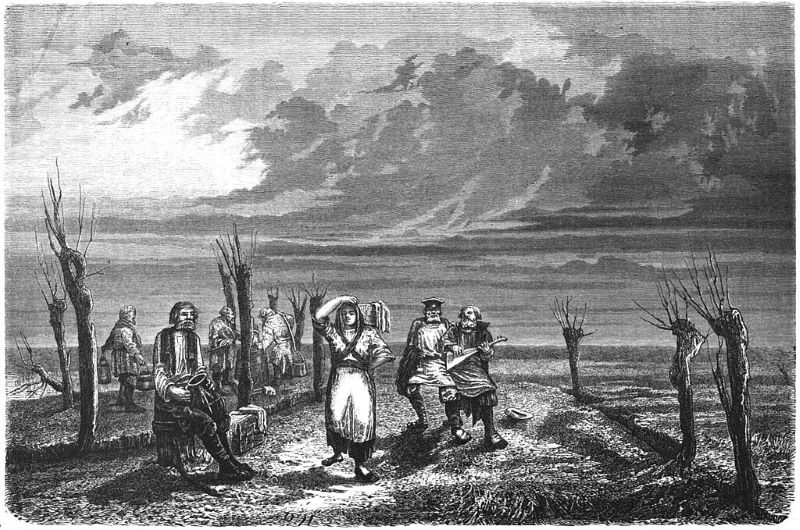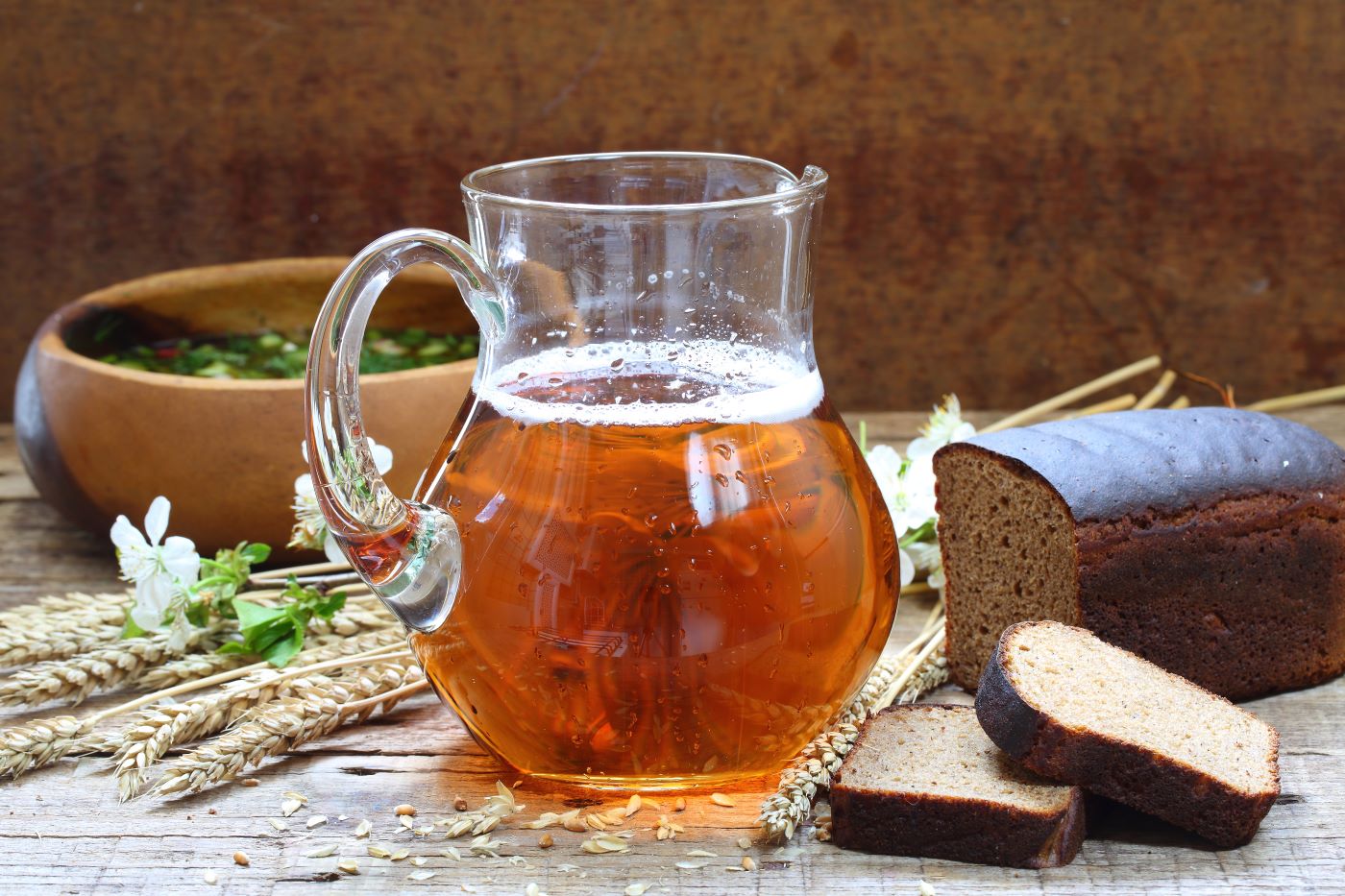Kvass: A Traditional Russian Fermented Beverage
By Tom Andersen
I have for you another leap of faith. Those who have trusted me in the past have not been disappointed. At least that’s what they tell me. Let’s begin like this: Who doesn’t like fermented beverages made from toasted grains? If you do, let’s keep going. If you are a believer in not wasting stale bread as I am, (the French even have a term for it “pain perdu.” The art of using “lost bread”) take another step with me. And if you want to participate in a many thousand year old tradition forwarded by the northern Europeans, notably the Russians, then just jump right in the water’s fine.
I heard about Kvass long ago and admit I dismissed it without even a consideration. Not until I was joking with a Russian friend of mine did I get a good schooling. Traditionally it was made with rye bread because rye was what they predominantly grew. It can be made from all sorts of wheats and grains. It can be flavored with all kinds of things, but the base is wheat bread. I suppose, in a nutshell, Kvass is really a probiotic rich lacto- fermented low alcohol wheat beer (without the hops). Anyway, I just assumed it would taste like wet bread. Wrong again. Two things, first I make a lot of bread. Second, sugars are added. Historically, birch syrup was a primary sweetener. Probably because it was readily available but anything goes when what you have is what you have – cane sugar, beet sugar, brown sugar, maple syrup, fruits, berries, whatever. There isn’t a lot of alcohol in this concoction and there is only a little fizz unless you add more at bottling.

Pictured above, a 19th century engraving by Dessin de d’Henriet depicting kvass vendors in Livonia. (Photo: Wikimedia Commons)
I just made a batch using homemade whole wheat sourdough and maple syrup. I toast the bread on #5 on the toaster (dark not burnt) and let it ferment for a week. Oh is it good – like maple syrup on toast, so that’s the recipe I’m sharing.
Let’s make a half gallon. To do that, you’ll need a one gallon wide mouth fermenter of some sort so you can get the bread in and out. You’ll need 6 or 7 cups of water, 5 or 6 cups of decent grainy cubed bread without a ton of preservatives (ideally make your own), ¾ cup of real maple syrup. You will also need 2 tablespoons of sourdough starter or ¼ tsp of bread yeast if you must.
Start by boiling the water and maple syrup for a minute or two. Let it cool down to 80 or 90 degrees. In the meantime, toast your bread. Toast it well, but don’t burn it. When the toast is cool, crunch it up and add it to the well cleaned fermenter. Add to that the sweetened water and the sourdough starter or the little bit of yeast and stir or shake it up. Cover with a cloth secured with a rubber band to let the air in and keep the bugs out. Put it in your cozy fermentation spot out of direct sunlight and let it sit for 5 to 7 days. Maybe shake it up a bit once in a while to keep the bread on top wet and working. It will probably start to bubble in a few hours. After a week, strain out the bread with a coarse strainer, then a fine one. I even let it settle out for a day then carefully pour it into sanitized bottles. It keeps for a week or two, maybe more, but it doesn’t last that long.
I really like this version, using the homemade whole wheat sourdough toast and the maple syrup, but try other combinations and share them with me. Spasibo (thank you).





